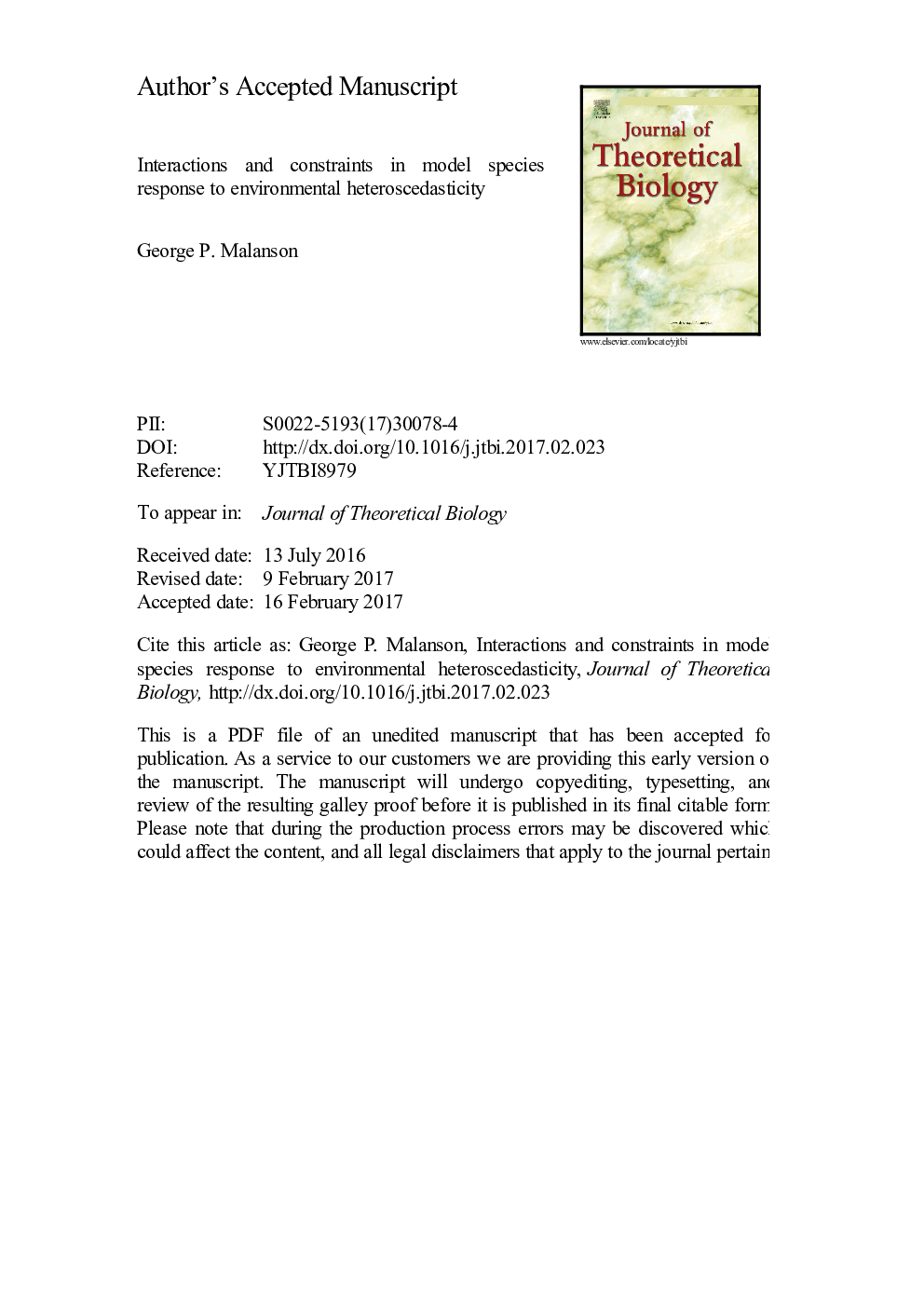| Article ID | Journal | Published Year | Pages | File Type |
|---|---|---|---|---|
| 5760149 | Journal of Theoretical Biology | 2017 | 33 Pages |
Abstract
Increasing environmental variability could exacerbate the effects of climate change on ecological processes such as population dynamics, or positive and negative effects (favorable or unfavorable weather) could balance. Such a balance could depend on constraints of the processes. Biological and spatial constraints are represented in a spatially explicit individual based simulation of an ecotone reduced to two species on a single environmental gradient. The effects of climate amelioration are simulated from a plant's-eye-view by increasing the establishment and decreasing the mortality rates. Variability is introduced as a random multiplier of these rates, and the strength of the variation is increased through the period of climate change. The biological constraints limit change in the rates, and the extent of the simulation grid represents a spatial constraint. A small increase in environmental variation, multiplied through time with climate change, increases extinction rates. The biological and spatial constraints have little effect on the response of populations. Instead, competition, based on the form of the species response functions to the environmental gradient at the point where they intersect, determines differences in population responses. Positive and negative variations in the environment do not balance because the responses are hierarchical and asymmetric. Differences persist because extinction during a negative anomaly cannot be reversed by a later positive one.
Related Topics
Life Sciences
Agricultural and Biological Sciences
Agricultural and Biological Sciences (General)
Authors
George P. Malanson,
